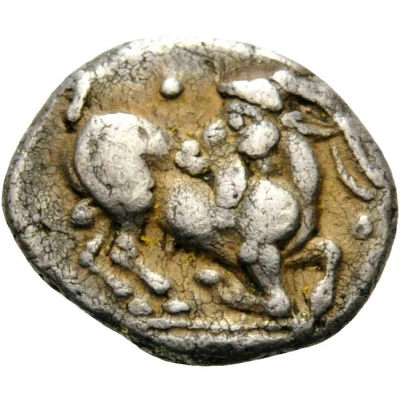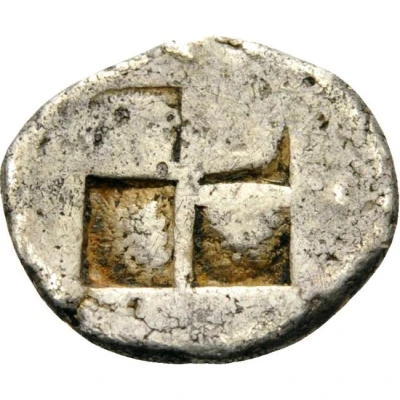


© Nomos AG
Diobol 485 BC - 470 BC
| Silver | 1.10 g | 12.0 mm |
| Issuer | Aigai (Macedon) |
|---|---|
| Type | Standard circulation coin |
| Years | 485 BC - 470 BC |
| Value | Diobol (⅓) |
| Currency | Drachm |
| Composition | Silver |
| Weight | 1.10 g |
| Diameter | 12.0 mm |
| Shape | Round (irregular) |
| Technique | Hammered, Incuse |
| Demonetized | Yes |
| Updated | 2024-10-10 |
| Numista | N#185954 |
|---|---|
| Rarity index | 95% |
Reverse
Quadripartite incuse square
Interesting fact
The Diobol coin was used as a form of currency in ancient Macedon during the reign of Alexander the Great's father, King Philip II. It was made of silver and had a distinctive design, featuring the image of a youthful Hercules on one side and a horse on the other. The coin was used for everyday transactions and was also used to pay soldiers and mercenaries. Despite its small size, the Diobol coin played an important role in the economy of ancient Macedon and is now highly sought after by collectors and historians.